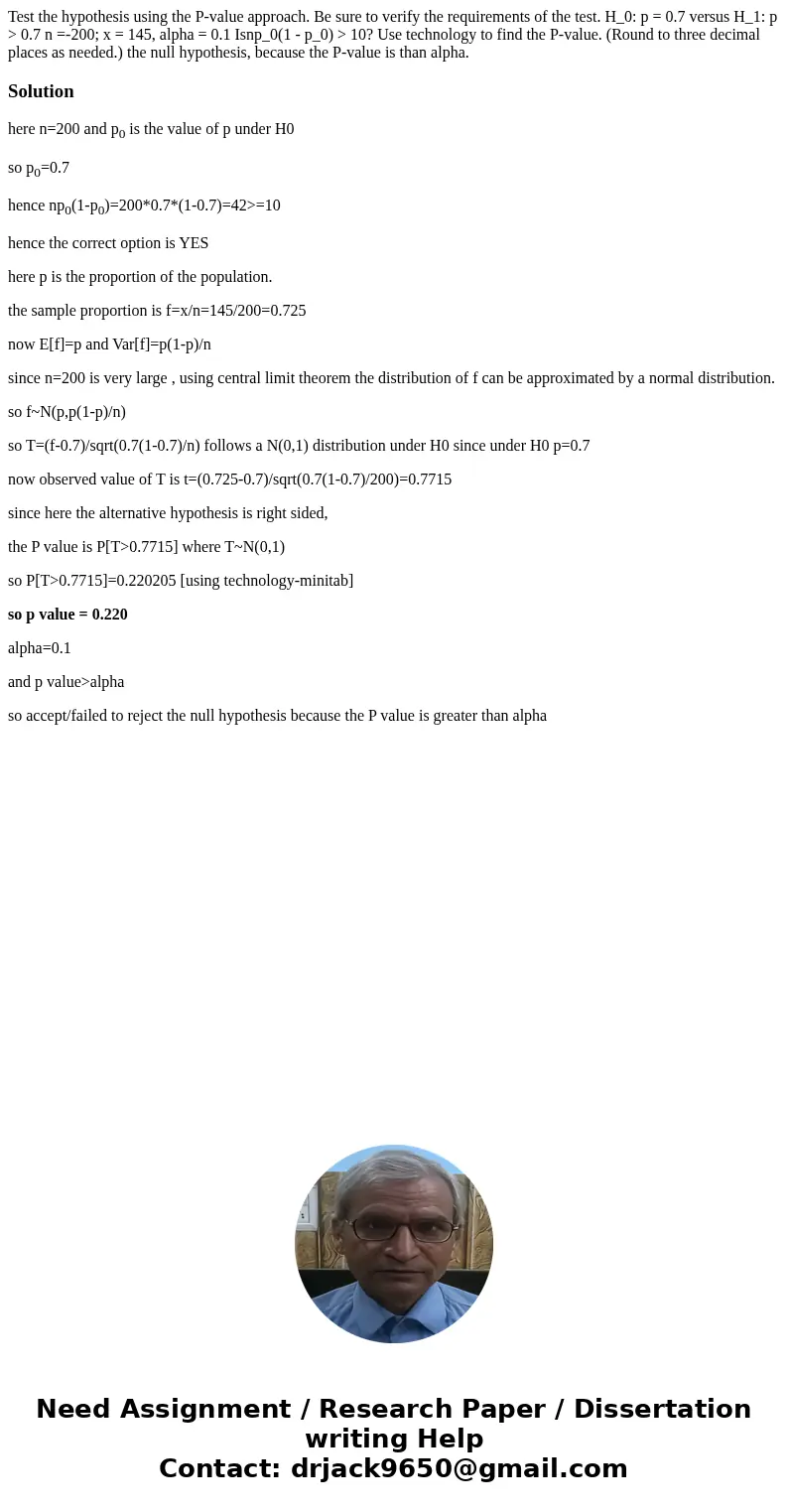Test the hypothesis using the Pvalue approach Be sure to ver
Solution
here n=200 and p0 is the value of p under H0
so p0=0.7
hence np0(1-p0)=200*0.7*(1-0.7)=42>=10
hence the correct option is YES
here p is the proportion of the population.
the sample proportion is f=x/n=145/200=0.725
now E[f]=p and Var[f]=p(1-p)/n
since n=200 is very large , using central limit theorem the distribution of f can be approximated by a normal distribution.
so f~N(p,p(1-p)/n)
so T=(f-0.7)/sqrt(0.7(1-0.7)/n) follows a N(0,1) distribution under H0 since under H0 p=0.7
now observed value of T is t=(0.725-0.7)/sqrt(0.7(1-0.7)/200)=0.7715
since here the alternative hypothesis is right sided,
the P value is P[T>0.7715] where T~N(0,1)
so P[T>0.7715]=0.220205 [using technology-minitab]
so p value = 0.220
alpha=0.1
and p value>alpha
so accept/failed to reject the null hypothesis because the P value is greater than alpha

 Homework Sourse
Homework Sourse